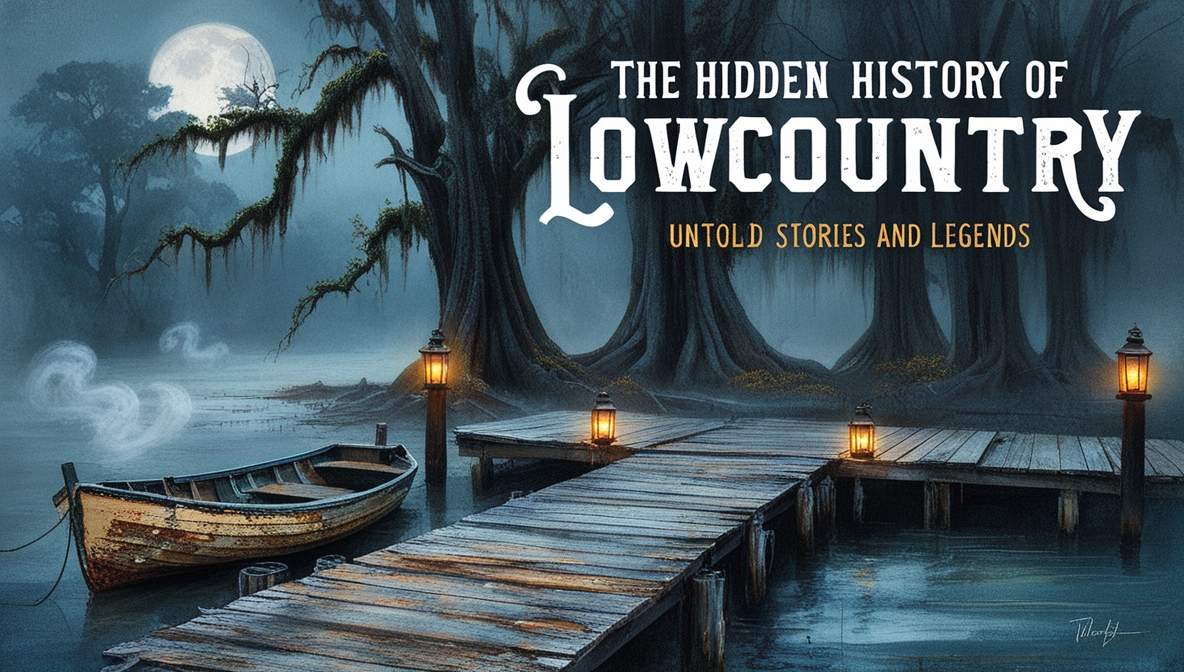
The Lowcountry, a coastal region in the southeastern United States, is rich in history, culture, and mystery. From the Gullah-Geechee heritage to centuries-old ghost stories, the Lowcountry is home to many untold stories and legends that shape its unique identity. In this exploration, we uncover the hidden history and legendary tales that make this region a treasure trove of folklore and history.
The Gullah-Geechee Culture: Preserving African Heritage
Who Are the Gullah-Geechee People?
The Gullah-Geechee people are descendants of enslaved Africans brought to the Lowcountry, particularly in South Carolina and Georgia, during the transatlantic slave trade. Isolated by the geography of the coastal islands and marshlands, the Gullah culture in Lowcountry has preserved much of their African heritage, including language, cuisine, and spiritual practices.
Their Role in Lowcountry History
For generations, the Gullah-Geechee people played a critical role in the development of Lowcountry agriculture, particularly in rice farming. The labor and knowledge they brought from West Africa helped build the economic foundation of the region. Their influence remains visible today in the region’s cultural practices, storytelling, and folklore.
The Ghosts of Charleston: Haunting Legends
Charleston’s Haunted Past
Charleston, often considered the heart of the Lowcountry, is known for its haunted streets and eerie tales. The city is filled with historic landmarks in Lowcountry that have been witness to wars, natural disasters, and slavery, leaving behind a legacy of tragedy and mystery.
Famous Ghost Stories
One of the most famous haunted locations is the Old Charleston Jail, where notorious criminals like Lavinia Fisher, said to be America’s first female serial killer, were imprisoned. Visitors often report strange noises and sightings. Another well-known legend is the Gray Man of Pawleys Island, a ghostly figure said to appear before hurricanes to warn locals of impending danger.
The Stono Rebellion: A Forgotten Uprising
What Was the Stono Rebellion?
The Stono Rebellion of 1739 was one of the largest slave uprisings in colonial America, occurring just outside Charleston. Led by a group of enslaved Africans, the rebellion was an attempt to escape to Spanish-controlled Florida, where freedom was promised. Although the rebellion was ultimately crushed, it had significant repercussions, leading to stricter slave laws in the South.
Why It’s Overlooked
Despite its importance, the Stono Rebellion is often overlooked in mainstream history. Its suppression and the subsequent fear it generated among slaveholders contributed to the deepening of racial tensions in the Lowcountry, shaping the region’s social dynamics for generations.
Pirates of the Lowcountry: Blackbeard and Beyond
Piracy in the Lowcountry
The coastal waters of the Lowcountry were once a haven for pirates during the Golden Age of Piracy in the 17th and 18th centuries. Pirates, including the infamous Blackbeard, used the region’s secluded inlets and waterways as hideouts and staging areas for their attacks on merchant ships.
Blackbeard’s Connection to Charleston
Blackbeard, one of the most notorious pirates in history, had a strong connection to Charleston. In 1718, he blockaded the port, holding the city hostage until his demands for medical supplies were met. His audacious actions solidified his legacy in Lowcountry folklore, and tales of hidden pirate treasure still capture the imagination of many today.
Sweetgrass Baskets: A Craft Steeped in Tradition
The Origins of Sweetgrass Baskets
Sweetgrass basket weaving is one of the most enduring traditions in the Lowcountry, with roots tracing back to West African craftsmanship. Brought to the region by enslaved Africans, this art form has been passed down through generations, particularly within the Gullah-Geechee community.
Cultural Significance
These baskets were initially used for practical purposes such as rice cultivation, but over time, they have become highly prized for their beauty and intricate designs. Today, sweetgrass baskets are symbols of Lowcountry heritage, representing the strength and resilience of the Gullah-Geechee people.
The Influence of Hurricanes: Shaping Lowcountry Life
Historical Impact of Major Hurricanes
The Lowcountry’s coastal location makes it particularly vulnerable to hurricanes, and throughout history, these storms have played a significant role in shaping both the landscape and the culture of the region. One of the most devastating hurricanes in Lowcountry history was the 1893 Sea Islands Hurricane, which caused widespread destruction and loss of life.
Resilience in the Face of Natural Disasters
Despite the frequent threat of hurricanes, the people of the Lowcountry have shown incredible resilience. Communities often come together in the aftermath of storms, with strong traditions of rebuilding and support that have been passed down through generations.
Conclusion: The Enduring Legacy of the Lowcountry
The Lowcountry’s hidden history is a testament to the resilience, diversity, and complexity of the region. From the Gullah-Geechee culture to legendary ghost stories and the bravery of those who fought for freedom, the untold stories of the Lowcountry continue to captivate and inspire. Exploring these narratives provides a deeper understanding of how history, folklore, and the natural environment have shaped this unique corner of the United States.